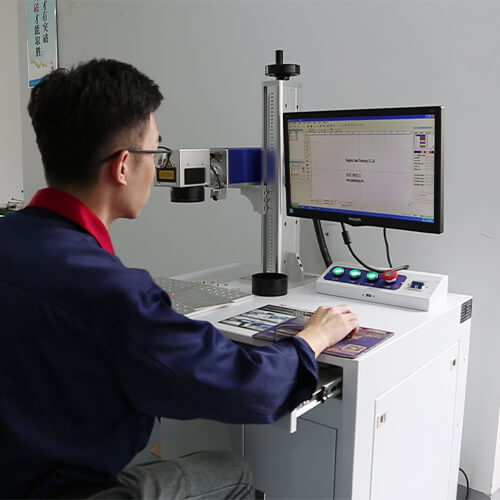Introduction
In the realm of electronic communication and power transmission, the Separate Slip Ring plays a pivotal role. Functioning as an electromechanical device that enables the transmission of power and electrical signals from a still structure to a rotating one, it has increasingly become a linchpin in many industries.
Table of Contents
- What is a Separate Slip Ring?
- Separate Slip Ring: Types
- Separate Slip Ring: Use
- Separate Slip Ring: Technical data
- Separate Slip Ring: Electrical Specifications
- Separate Slip Ring: Mechanical Specifications
- Separate Slip Ring: Properties
- Separate Slip Ring: Functionality
- Separate Slip Ring: Features
- Separate Slip Ring: Options
- Separate Slip Ring: Main Applications
- Separate Slip Ring: Advantages and Disadvantages
- Separate Slip Ring: Cleaning and Maintenance
- Separate Slip Ring: Installation Guide and Precautions
- Separate Slip Ring: Difference Between Other Slip Rings
- How to find the optimal Separate Slip Ring
- Conclusion
- FAQ about Separate Slip Ring
What is a Separate Slip Ring?
A Separate Slip Ring is an innovative electromechanical device that represents a significant step forward in slip ring technology. Its name directly acknowledges its standout feature; unlike most slip rings that are singular and compact units, a Separate Slip Ring’s rotor and stator are two different entities. This distinguishing trait renders it uniquely flexible and advantageous in specific applications.
In essence, a Separate Slip Ring facilitates the transmission of electrical signals and power from a static structure to one in constant rotation. This ability to sustain ongoing communication between a stationary entity and a rotating one is critical in a multitude of industrial scenarios, such as in CCTV systems, wind turbines, and assembly lines, among others.
The Separate Slip Ring’s distinct design not only offers increased mechanical flexibility but also solves common installation issues where space is a valuable and limited resource. It provides an advantage in installations where traditional slip rings simply may not fit or where the configuration of the rotating object cannot accommodate a traditional slip ring’s geometric constraints.
Separate Slip Ring: Types
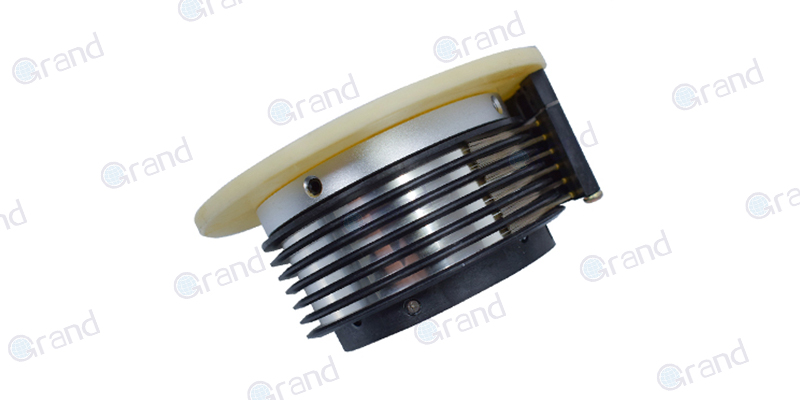
Given the versatile nature of Separate Slip Rings, they are available in a variety of types, each designed with unique characteristics to cater to specific applications. Here are the most frequently encountered types:
- Separate Capsule Slip Ring
The Separate Capsule Slip Ring is one iteration of separate slip rings, bringing together the benefits of the separate design with the compactness of the capsule model. This type of Separate Slip Ring is renowned for its compact size and ability to incorporate multiple circuits, which allows it to perform in stringent space-restricted applications perfectly.
- Separate Pancake Slip Ring
As the name suggests, the Separate Pancake Slip Ring is flat or pancake-like in shape, making it an excellent choice for setups that have considerable limitations in height. These can carry high-frequency signals and are built to minimize noise interference while transmitting data or power.
- Separate Fiber Optic Slip Ring
Separate Fiber Optic Slip Rings are designed to accommodate the transmission of optical signals seamlessly between stationary and rotating parts in a system. They are known for their superior performance in terms of signal integrity, and they are primarily used in industries where the transmission of high-speed data is crucial.
- Separate High-frequency Slip Ring
These specialty separate slip rings are beneficial where the transmission of high-frequency signals is required. By allowing high-frequency signal transmission between the rotating and stationary parts of a system, they are vital in telecommunications and radar installations.
- Separate Ethernet Slip Ring
Separate Ethernet Slip Rings are technologically advanced units that offer dependable transmission of Ethernet protocols between rotary and stationary platforms. They are characterized by their smooth operation at high data rates, making them optimal for applications in industries like robotics, modern machining, and surveillance systems.
Each one of these types caters to specific application needs and industry requirements with their unique properties. By understanding the requirements of a given application, one can select the most suitable Separate Slip Ring from these types.
Separate Slip Ring: Use
Separate Slip Rings have emerged as an indispensable component for a wide range of applications in various industries. They are used when power and data need to be transmitted efficiently between stationary and rotating systems. Below is an overview of some common uses and applications of Separate Slip Rings:
- Wind Energy

Wind turbines require the transmission of electrical power and signals between the stationary base and the rotating blades. Separate Slip Rings offer an efficient and space-optimizing solution for transmitting information about the turbine’s condition, controlling blade positions, and delivering generated power from the generator to the grid.
- Robotics

In robot joints and automated systems, Separate Slip Rings are employed for transmitting control signals, power, and data without limiting the robot’s range of motion. They are crucial in transmitting various signals related to sensor feedback, motor control, and vision systems while maintaining a compact, low-maintenance design.
- Radar and Antenna Systems
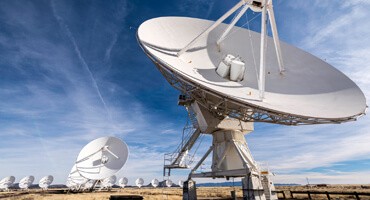
Rotating radar and antenna systems rely on Separate Slip Rings to transmit power and signals from their base to the rotating structure continually. They enable the uninterrupted transfer of high-frequency data, control signals, and power with minimal noise and interference for optimal system performance.
- Medical Equipment

Medical equipment such as CT scanners and MRI machines necessitate the transfer of power and data between stationary and rotating components. Separate Slip Rings facilitate this transmission smoothly, minimizing electrical noise and maintaining exceptional signal integrity, which is vital for the accurate functioning of such equipment.
- Cable Reels
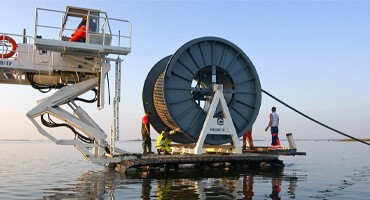
Cable reels require continuous power and signal transmission while rotating, e.g., in retractable electric vehicle charging stations. Separate Slip Rings allow for uninterrupted power supply and data communication, ensuring seamless functionality without causing cable twisting or wear.
- Packaging and Processing Machinery
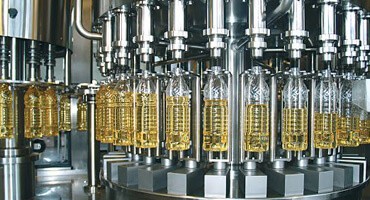
In the packaging and processing industry, machinery often has rotating components, such as labeling machines and filling equipment. Separate Slip Rings allow for the transfer of power, control signals, and data between stationary and rotating parts without hindering the machine’s motion or causing cable wear.
- Marine and Offshore Equipment
Offshore equipment like cranes, remotely operated underwater vehicles (ROVs), and rotating turrets demand reliable power and signal transmission in harsh environments. Separate Slip Rings accommodate such requirements, providing durability, stability, and high-speed data transmission capabilities in these demanding conditions.
- Aerospace Industry
Various aerospace applications, including satellite communication systems and electrical propulsion systems of aircraft, require reliable signal and power transmission between moving components. Separate Slip Rings ensure the effective transfer of power and data while maintaining a compact and lightweight design that meets the industry’s stringent standards.
In conclusion, Separate Slip Rings contribute significantly to a variety of applications across multiple industries. By providing compact, low-maintenance, and high-performance solutions for transferring power and signals, they play a vital role in enabling the optimal functioning of these complex systems.
Separate Slip Ring: Technical data
The technical specification of Separate Slip Rings can vary significantly based on their specific use case and design. Below are some common technical parameters you would typically see for this type of slip ring:
- Circuit Quantity
Separate slip rings can be built with a variable number of circuits depending on the application. The circuit count could range from a single circuit for simple power or signal transfer to multiple, parallel circuits for complex applications.
The current rating for Separate Slip Rings can range from a few milliamperes for data applications to hundreds of amperes for high-power applications.
- Voltage
The voltage rating of Separate Slip Rings can vary widely depending on the use. Typically, Separate Slip Rings can handle voltage ratings from low-level signal voltages (a few volts) up to several kilovolts for high-power applications.
- Operating Speed
Separate Slip Rings can operate at varying rotational speeds, usually specified in RPM (rotations per minute). Speeds could range from very slow (few RPM) to very fast (thousands of RPM), depending on the application.
- Operating Temperature
Separate Slip Rings are designed to operate within a specific temperature range, which can vary significantly based on their intended application. This range might be from -40°C to +85°C in general, but rings can be customized for broader or narrower temperature ranges.
- Materials
The material of Separate Slip Rings usually involves non-ferrous metals like gold, silver, or copper for electrical connections due to their low resistivity properties. The housing materials can range from plastic to stainless steel, depending on the environmental conditions.
- Contact Type
Separate Slip Rings can employ several contact types such as precious metal contacts, which offer high reliability and longevity, fiber brush contacts for higher data rates, or mercury contacts for very low electrical noise.
- IP (Ingress Protection) Rating
Separate slip rings can have varying degrees of sealing to prevent ingress of dust and water. This is usually represented by an IP rating, where higher numbers indicate more robust protection.
- Connectivity
Separate slip rings can come with different types of connectors such as solder pins, terminal blocks, or connectors to facilitate user-defined cable assemblies.
- Rotation Noise
In high-precision environments, low electrical noise is crucial, and this is usually denoted in milliohms on the product specification.
In summary, the technical data for Separate Slip Rings can vary extensively based on the application they are designed for. It is essential to check the aforementioned specific parameters for your particular type and intended use.
Separate Slip Ring: Electrical Specifications
The exact electrical specifications of a Separate Slip Ring will greatly depend on its specific model and intended application. However, the following are some general electrical specifications that are commonly seen in such devices.
1. Operating Voltage
The operational voltage of a Separate Slip Ring can vary widely depending on its design and intended use. For transmitting signals, the operating voltage could be as low as a few millivolts, while for power applications it could be as high as several kilovolts.
2. Current Capacity
Current capacity refers to the maximum amount of electrical current that a Separate Slip Ring can carry without overheating or causing damage. It can range from a few milliamperes for signal transmissions to hundreds of amperes for high-power applications.
3. Dielectric Strength
Dielectric strength highlights the maximum voltage a material can withstand without breaking down. High dielectric strength implies higher resistance to electrical breakdown or failure.
4. Insulation Resistance
Insulation resistance is a critical parameter, indicating the overall quality of insulation around the conductive elements. A high resistance value ensures that incidental contact with the insulation will not result in substantial current flow.
5. Electrical Noise
Electrical noise refers to unwanted disturbances in electrical signals. In Separate Slip Rings, it’s crucial to minimize this to ensure reliable data and power transmission. Typically, it’s expressed in milliohms or microhms.
6. Contact Resistance
Contact resistance reflects the resistance encountered at the contact point between the rotor and stator. A lower contact resistance value ensures a more efficient transmission of signals or power.
7. Signal Performance
For Separate Slip Rings transmitting signals or data, parameters like data rate, bandwidth, and signal-to-noise ratio (SNR) can be crucial. They define the quality and efficiency of signal transmission.
8. Lifetime
The electrical lifetime of a Separate Slip Ring, often measured in millions of rotations, can depend on many factors, including contact material, operating environment, speed, and load.
By paying careful attention to these electrical specifications, users can choose a Separate Slip Ring that perfectly fits their application’s requirements. However, it’s important to remember that these values might differ greatly from one model to another due to variations in design, materials used, and manufacturing processes.
Separate Slip Ring: Mechanical Specifications
The mechanical specifications of a Separate Slip Ring can differ significantly based on its specific model, design, and application. However, the following are some common mechanical specifications that you might encounter in such devices:
1. Dimensions
Separate Slip Rings can come in various sizes, depending on the number of circuits, type of application, and space restrictions. Compact models can be as small as just a few millimeters in diameter, while larger ones can have diameters of several inches or more.
2. Housing Material
The housing material of a Separate Slip Ring can vary depending on factors such as the environment, weight restrictions, and application requirements. Typical materials include lightweight plastics, aluminum, or more durable materials such as stainless steel.
3. Bearing Type
The bearing type used in Separate Slip Rings can be an essential factor in determining the mechanical stability and life span of the slip ring. Common bearing types include ball bearings for longer life and smoother operation, and self-lubricating polymer bearings for reduced friction and maintenance requirements.
4. Contact Material
Contact materials play a significant role in the performance and longevity of Separate Slip Rings. Metal and composite contacts such as gold, silver, or copper are often used for their low resistivity, excellent conductivity, and resistance to wear and oxidation.
5. Operating Speed
The rotational speed, typically expressed in rotations per minute (RPM), can vary among Separate Slip Rings. Speeds can range from a few RPM for light applications to thousands of RPM for high-speed systems.
6. Operating Torque
Operating torque is the amount of torque required to overcome the internal friction of the slip ring. It is a critical parameter in determining the force required to rotate the slip ring, affecting the system’s performance and efficiency.
7. Mechanical Life
Mechanical life refers to the expected useful life of a Separate Slip Ring. It is often expressed in terms of the number of rotations or operational hours. Design factors such as the bearing type, contact material, and environmental conditions can affect mechanical life.
8. Operating Temperature
Separate Slip Rings are often designed to function within a specific ambient temperature range. Depending on the application, this range can differ, but a typical range is -40°C to +85°C. Specialized slip rings can be designed to operate in more extreme temperature conditions.
9. Ingress Protection (IP) Rating
The IP rating indicates the degree of protection against solid objects (e.g., dust) and liquids. It is an essential factor for choosing a Separate Slip Ring when the operating environment involves harsh conditions.
By considering these mechanical specifications, users can select an appropriate Separate Slip Ring for their specific requirements. Remember that specifications can vary widely from one model to another, so it’s crucial to verify the compatibility of the selected model with the intended application.
Separate Slip Ring: Properties
Separate Slip Rings bear certain properties that make them an integral part of several systems and applications. The following properties are some of the reasons industries prefer them:
1. Versatility
One of the main properties of Separate Slip Rings is their versatility. They are capable of handling power, signal, or combined power and signal transmission. This feature allows them to be adopted for a variety of applications, from robotics to wind turbines.
2. High Transmission Quality
Separate Slip Rings can ensure high-quality transmission, particularly when it comes to delicate signals. They are built to have low electrical noise, which means signal integrity is maintained, resulting in reliable and efficient data or signal transmission.
3. Compact Design and Flexibility
They often come in compact sizes, offering flexibility in system integration. This is particularly useful for systems with restrictive space requirements. The separate rotor and stator offer additional flexibility in situations where integrated installation isn’t feasible.
4. Robust and Durable
These devices are engineered to sustain demanding workloads and harsh environments, demonstrating high resistance to corrosion, vibration, and general wear and tear. They are robust and durable, ensuring a longer lifespan, which is beneficial in both cost-effectiveness and system reliability.
5. Low Maintenance
Once installed, Separate Slip Rings typically require very minimal maintenance. Some even feature self-lubricating material, thereby prolonging the life of the device and further reducing maintenance needs.
6. Customizable
Separate Slip Rings can often be customized to meet specific application requirements. Variations can exist in terms of the number of circuits, current capacity, IP rating, size, and other important parameters.
7. Wide Operating Range
Separate Slip Rings are designed to perform efficiently over a wide range of operating conditions such as varying temperatures, rotational speeds, and transmission requirements.
8. Stable Performance
Generally, Separate Slip Rings exhibit stable and consistent performance. They sustain their efficiency and performance, irrespective of the rotation speed or direction.
In summary, Separate Slip Rings feature a range of beneficial properties that make them an excellent solution for various industries and applications where consistent and reliable power or data transmission is required between stationary and rotating components.
Separate Slip Ring: Functionality
Separate Slip Rings are notable for their distinct ability to enable the transmission of electric power or data signals between a stationary source and a rotating object, and vice versa. Here, we’ll cover the general functionality of these devices:
1. Rotation
As the rotating part of a machine or device (like a motor, generator, or wind turbine) moves, these slip rings work to maintain the electrical connection between the moving and static parts. This ensures a continuous transfer of electricity or data during the rotation, regardless of the direction or speed of the rotation.
2. Electrical Signal Transfer
In the context of signal transfer, these slip rings can help to transmit multiple signals concurrently, thanks to their multi-channel properties. They ensure smooth, low-noise transmission, which is crucial for systems that involve sensitive signal transfer, such as surveillance systems, high-speed cameras, or medical imaging devices.
3. Electrical Power Transfer
Separate Slip Rings can transfer electrical power from a stationary source to a rotating component. This ability is vital in several applications, most notably in wind turbines, where it helps to transfer power from the rotating blades to the stationary generator.
4. Long-distance Transmission
As they can work with varied voltage and current inputs, Separate Slip Rings can be configured to transfer power or signals over long distances. For example, in undersea cables and other telecommunications fields, Separate Slip Rings help ensure reliable transmission.
5. Integration with Various Devices
Separate Slip Rings can be integrated into a plethora of rotating systems like motors, communication machinery, medical devices, and even amusement park rides. The separate rotor and stator make them flexible for installations where space restrictions or specific design criteria may exist.
6. Duplex Communication
In some advanced designs, Separate Slip Rings offer duplex communication, meaning that data can be transmitted in both directions concurrently. This is particularly helpful in applications demanding bidirectional communication.
In conclusion, the primary function of Separate Slip Rings revolves around sustaining consistent and reliable electrical contact between static and rotating parts. This is accomplished while ensuring low electrical noise, high signal integrity, and reliable power transfer in the face of continuous rotation and varying operational conditions.
Separate Slip Ring: Features
Separate Slip Rings are equipped with various useful features that enhance their efficiency and make them suitable for a wide range of applications. The following are some of these prominent features:
1. Multi-Channel Capability
Separate Slip Rings often feature multi-channel functionality, enabling them to handle multiple power circuits or signal types concurrently. This is important in applications that require the simultaneous transmission of various types of signals or power.
2. Low Electrical Noise
One key feature of Separate Slip Rings is their low electrical noise, which is critically important for the clear transmission of data. This helps to ensure low interference and high integrity of the signals being transferred.
3. High Durability
Separate Slip Rings are generally designed to be robust and durable, capable of withstanding harsh environmental conditions, heavy workloads, and long periods of operation. This contributes to their extended operational lifespan.
4. Compact and Lightweight Design
Many Separate Slip Rings are designed to be compact and lightweight, making them ideal for systems where space is limited. Even despite their small size, they can handle high levels of power and data.
5. Flexible Installation
The separate design of the rotor and stator allows flexibility in the integration process, making these slip rings suitable for a wide range of applications where space constraints or peculiar design specifics exist.
6. High Rotation Speed Capability
Separate Slip Rings can operate at high rotational speeds while maintaining efficient power or signal transmission. They can handle varying speeds and directions of rotation without compromising on the signal or power transmission quality.
7. Low Friction
These devices typically feature low rotational torque and friction, thanks to well-designed bearing systems. This contributes to their long lifespan and reliable operation.
8. Maintenance-Free Operation
Many Separate Slip Rings are designed for long periods of operation with low or even no maintenance requirements. This is often due to the use of durable materials and self-lubricating bearings to reduce wear and tear.
9. Customizable Design
Depending on the application, Separate Slip Rings can often be customized to meet specific requirements. This might include altering dimensions, improving IP rating, varying the number of circuits, or changing the types of connectors or wires.
In summary, Separate Slip Rings showcase a host of features designed to ensure optimal performance, including compactness, high durability, customization potential, and low-maintenance design, among others. These features contribute significantly to their application across various sectors, underpinning transmitters and power delivery in continuous motion systems.
Separate Slip Ring: Options
Separate Slip Rings come in various designs and options to accommodate a diverse range of applications. Below, we explore some of the options available:
1. Based on Size
Depending on the size restrictions of the application, Separate Slip Rings can be miniaturized to take up very little space, or they can be larger for systems where size isn’t a limiting factor.
2. Based on the Number of Channels
Separate Slip Rings can have varying numbers of channels or circuits, based on the number of power or signal paths that need to be maintained between the stationary and rotating components.
3. Based on the Type of Transmission
They can specifically be designed to handle either power transmission, signal transmission, or combined power and signal transmission.
4. Based on Housing Material
The housing material can be chosen based on environmental conditions, weight restrictions, and durability requirements. Common materials include plastics for lightweight applications, aluminum for a balance between weight and strength, and stainless steel for situations demanding increased durability and corrosion resistance.
5. Based on Contact Material
Contact materials vary based on the required conductivity and durability. Common materials include gold for high conductivity and reduced electrical noise, silver for a good balance between cost and conductivity, and copper for larger power applications.
6. Based on Protection Rating
Depending on the environmental conditions of the application, the slip ring may need a specific IP (Ingress Protection) rating. This rating signifies how resistant the device is to dust, water, and other potentially damaging elements.
7. Based on Bearing Type
Bearing type can influence the slip ring’s longevity and performance. Ball bearings are generally used for longer life and smoother operation, whereas self-lubricating bearings are used for reduced friction and maintenance.
8. Based on the Current Rating
Current rating varies from low to high ampere Slip Rings, based on the current transfer requirements of the application.
9. Based on Speed Rating
Speed ratings can vary from low-speed applications to high-speed uses where the efficiency, contact reliability, and longevity of the Slip Ring are integral.
In conclusion, Separate Slip Rings offer a wide array of options and can be fully customized to fit specific system requirements. These options influence the overall performance and compatibility of the slip ring within the intended application.
Separate Slip Ring: Main Applications
Separate Slip Rings are used in a myriad of applications due to their versatile functionality, customizable options, and robust design. Here are some of the main applications:
1. Wind Turbines
In wind turbines, Separate Slip Rings play a crucial role by enabling the transfer of power generated by the rotating turbine blades to the stationary power grid.
2. Medical Equipment
In medical imaging equipment like CT scanners and MRI machines, Separate Slip Rings provide an essential function by transmitting power and vital signals between static and rotating parts.
3. Robotics
Many robotic systems utilize Separate Slip Rings to manage the transmission of power, signals, and data between stationary control systems and moving robotic parts.
4. Satellite Communication
In satellite communication systems, Separate Slip Rings are used to transmit power and exchange data between stationary parts and rotating antennas or alignment systems.
5. Defence Equipment
These Slip Rings are used in various defense equipment, including radar systems, remote-controlled vehicles, and thermal imaging systems, to maintain constant power or data transmission across rotating interfaces.
6. Industrial Machinery
In many types of rotating industrial machines or production lines, these Slip Rings are used to transmit power, signals, or data between fixed and moving parts.
7. Marine Applications
Various marine systems, including communication antennas, navigation systems, and winch systems, use Separate Slip Rings to carry signals and power across rotating joints.
8. Closed-circuit Television (CCTV) Systems
Closed-circuit Television systems, particularly PTZ (Pan-Tilt-Zoom) cameras, use these Slip Rings to enable a seamless transfer of signals and power, allowing for an uninterrupted 360-degree view.
9. Amusement Park Rides
In various rides and entertainment setups, Separate Slip Rings allow for uninterrupted power transmission and system control instructions between the stationary control unit and the rotating parts of the ride.
In summary, Separate Slip Rings play a critical role in various applications across multiple industries, wherever a need arises to maintain consistent data, signal, or power transmission between moving and stationary parts of a system. Their versatile design, coupled with their high reliability, makes them an indispensable element of these systems.
Separate Slip Ring: Advantages and Disadvantages
Separate Slip Rings carry several advantages in terms of their design and function but may present some challenges or limitations under certain circumstances. Here’s a detailed look at their pros and cons.
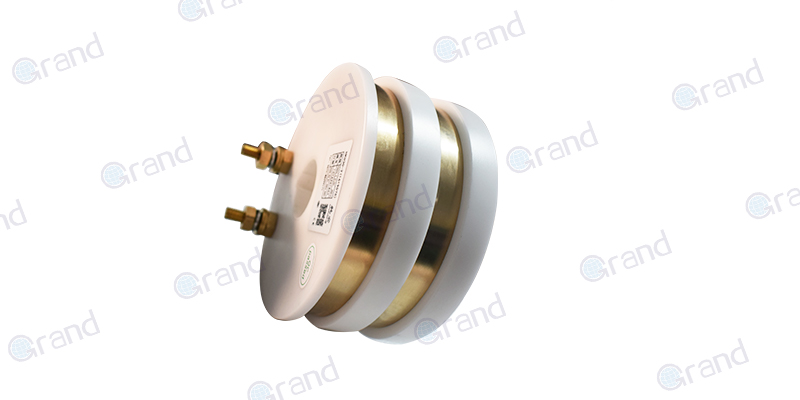
Advantages:
- 1. Flexibility in Design
The primary advantage of Separate Slip Rings lies in their separable stator and rotor design which provides more flexibility in arrangement and connection. This ‘divide and conquer’ approach helps to overcome tight spaces and unusual configurations.
- 2. Robust and Reliable
These Slip Rings offer steady performance in demanding environments. They are typically designed to withstand high rotational speeds, variable environmental conditions, and heavy-duty applications, which makes them a reliable choice.
- 3. Multiplicity of Transmission
Separate Slip Rings can handle multiple circuits concurrently, for power transmission, data signals, and control signals, providing an all-in-one solution for various requirements in a system.
- 4. Long Operational Life
Separate Slip Rings are designed for long-term operation with minimal maintenance. Their high-quality materials, low friction bearings, and low electrical noise further contribute to their durability and longevity.
- 5. Fast Data Transmission
Some Separate Slip Rings are compatible with high-speed data networks like Ethernet or Fibre Channel, enabling high-speed data transmission in a full rotational environment.
- 6. Customizable Options
Their adaptability to individual project requirements makes them quite advantageous. They can be customized in terms of size, number of circuits, signals managed, IP rating, and further specific traits to fit myriad applications.
Disadvantages:
- 1. Complexity in Design
While their separate design provides flexibility, it can simultaneously introduce complexity during installation and integration. It requires careful planning and execution to ensure the best results.
- 2. High Cost
Compared to single-piece integrated slip rings, Separate Slip Rings can be more costly. The added expense comes from the individualized manufacturing process, design customizations, and the increased labor involved in separate installations.
- 3. Possible Interference
While most designs provide low electrical noise, there may still be instances of signal interference, particularly in separate slip rings transmitting multiple signals or channels. This could potentially affect the accuracy of the data being transmitted.
- 4. Environmentally Sensitive
In certain aggressive environmental conditions, the performance of Separate Slip Rings may be affected. Protection measures such as sealed enclosures and increased Ingress Protection (IP) rating could be needed for reliability, which increases cost.
In a nutshell, the advantages of Separate Slip Rings — such as design flexibility, reliability, multiplicity of transmission, and fast data rates — typically outweigh the disadvantages. However, given the application-specific conditions, it’s vital to account for potential challenges such as design complexity, cost, potential interference, and environmental sensitivity.
Separate Slip Ring: Cleaning and Maintenance
Proper cleaning and maintenance of Separate Slip Rings are essential for prolonging their life and ensuring optimal performance. The following are key guidelines and recommendations for their upkeep:
1. Visual Inspection
Regularly inspect the slip ring assembly for visible signs of wear, damage, or contamination. Check for any loose or damaged connections and ensure that all moving parts are in good working order.
2. Electrical Testing
Perform periodic electrical tests to confirm that the Separate Slip Ring is functioning as expected. Use an insulation tester or ohmmeter to measure insulation resistance and verify that contact resistance is within acceptable limits.
3. Cleaning Contacts
Use a lint-free cloth or swabs soaked in isopropyl alcohol to gently clean the contact surfaces of the stator and rotor. Make sure that the power is off and wait for the alcohol to fully evaporate before reconnecting the system and resuming operation.
4. Lubrication
Some Separate Slip Rings have self-lubricating bearings, while others may require periodic lubrication. If needed, apply a thin layer of high-quality, low-viscosity lubricant that matches the manufacturer’s recommendation. Avoid using excessive or inappropriate lubricants that may contaminate the contact surfaces or cause other issues.
5. Cable and Connector Inspection
Inspect the cables and connectors for any signs of wear, damage, or loosening. Ensure that all connections are secure and that there is no damage that may compromise performance.
6. Dust and Debris Removal
Dust or debris accumulation can negatively impact the contact surfaces and overall performance. Regularly use compressed air or a brush to clear any accumulated particles from the slip ring and nearby components. Be cautious not to cause any damage during the cleaning process.
7. Preventing Corrosion
In highly corrosive environments, consider using supplementary corrosion protection measures, like a sealed enclosure or applying a protective coating. This can help extend the life of the Separate Slip Ring.
8. Monitoring Temperature and Humidity
Be mindful of the operating environment’s temperature and humidity, as these factors can influence the performance and durability of the Separate Slip Ring. Ensure that environmental conditions remain within the specified range by the manufacturer.
9. Following Manufacturer’s Recommendations
Always follow any specific maintenance guidelines, schedules, or precautions provided by the manufacturer. Remember that every slip ring may come with unique maintenance requirements.
In conclusion, to ensure optimal performance and extend the life of Separate Slip Rings, periodic cleaning and maintenance should be performed. Regular visual inspections, electrical tests, contact cleaning, and other maintenance measures should be undertaken. Always follow the manufacturer’s recommendations to avoid potential damage or malfunction.
Separate Slip Ring: Installation Guide and Precautions
Installing Separate Slip Rings requires meticulous planning, execution, and adherence to precautions to ensure their optimum performance. Below is a general guide along with some precautions to consider while installing a Separate Slip Ring:
Installation Guide
- 1. Familiarize with Components
Before starting the installation, study the Separate Slip Ring’s components and their operation in detail, including the stator, rotor, contacts, and connecting cables.
- 2. Plan the Installation
Determine the best location to mount the stator and rotor of the Separate Slip Ring. Ensure there is enough space and that proper alignment and connection between the stator and rotor are feasible.
- 3. Alignment
Proper alignment of the stator and rotor is crucial as it ensures good contact and minimizes wear. Use appropriate mounting techniques such as brackets, flanges, or clamps to maintain alignment between the stator and rotor during installation and operation.
- 4. Mount the Stator and Rotor
Securely fasten the stator and rotor to their designated mounting surfaces, following the manufacturer’s guidelines. Ensure that the mounting surfaces are clean and free from debris.
- 5. Connect Cables and Wiring
Attach the connecting cables and wiring according to the provided wiring diagram or connection instructions. Make sure that all connections are secure and follow any shielding requirements to prevent electromagnetic interference.
- 6. Assemble the Contact Surfaces
Bring the contact surfaces of the stator and rotor together, ensuring proper alignment and smooth rotation of the rotor. When required, apply a thin layer of high-quality, recommended lubricant to the contact surfaces.
- 7. Test the Installation
Conduct an initial test to confirm the Separate Slip Ring’s functionality and electrical performance before incorporating it into the entire system. Verify that the power, signal, or data transfer across the rotary interface is successful and that there is no excessive friction, noise, or vibration.
- 8. Finalize Installation
Once the Separate Slip Ring has been successfully tested, complete the installation by connecting it to the overall system and confirming that everything is working as intended.
Precautions
- 1. Follow Manufacturer’s Guidelines
Adhere to all the manufacturer’s recommendations and guidelines throughout the installation process, as every slip ring is unique and may have specific requirements.
- 2. Confirm Compatibility
Ensure that the Separate Slip Ring is compatible with the system requirements, such as current, voltage, speed, and environmental conditions.
- 3. Electrical Safety
Disconnect all power sources during installation and follow proper electrical safety precautions to prevent accidents or damage to the Slip Ring.
- 4. Handling with Care
Handle Separate Slip Rings with care during installation, as they can be sensitive to impact, shock, or excessive force, which may damage the delicate contact surfaces or bearings.
- 5. Avoid Contamination
Keep the Separate Slip Ring’s components, especially the contact surfaces, clean and free from dirt, debris, moisture, or contaminants during installation, as these could impact performance and cause premature wear.
- 6. Environmental Considerations
Ensure that the installation site meets the operating temperature and humidity specifications set by the manufacturer for optimum performance and longevity.
In summary, a careful and methodical approach is necessary when installing Separate Slip Rings. Proper planning, alignment, connection, and testing are crucial. Following the manufacturer’s guidelines and taking the necessary precautions will help ensure that the Separate Slip Ring functions optimally and has a long operational life.
Separate Slip Ring: Difference Between Other Slip Rings
Slip rings come in various types and configurations, each catering to specific situations and requirements. The Separate Slip Ring stands out from the rest due to its unique design, functionality, and the diverse range of applications it supports. In order to appreciate the distinct advantages Separate Slip Rings offer, it is essential to explore how they differ from other types of slip rings.
Separate Slip Ring vs. Through-bore Slip Ring
A Through-bore Slip Ring, also known as the hollow shaft slip ring, features a central hole that accommodates rotational shafts, cables, or other components to pass through it smoothly. While both the Separate Slip Ring and Through-bore Slip Ring boast certain common features, their primary distinction lies in their design. The Separate Slip Ring is designed with distinct rotor and stator components, providing greater flexibility when it comes to installation in constrained spaces.
Separate Slip Ring vs. Capsule Slip Ring
A Capsule Slip Ring is a compact and lightweight slip ring with an integrated design incorporating circuits housed within a capsule-like structure. Although both the Separate Slip Ring and Capsule Slip Ring offer space-saving solutions, the Separate Slip Ring provides more customization capabilities and is better suited for complex installations. Moreover, Separate Slip Rings typically handle higher voltage and current ratings compared to Capsule Slip Rings.
Separate Slip Ring vs. Pancake Slip Ring
The Pancake Slip Ring, named for its slim and flat structure, is designed for applications with strict height restrictions. While both Separate and Pancake Slip Rings help meet space constraints, the Separate Slip Ring is usually more versatile in terms of customization options. Pancake Slip Rings face reduced flexibility with a limitation in RF and high-frequency capabilities, whereas Separate Slip Rings can better accommodate versatile high-speed data transmission requirements.
Separate Slip Ring vs. Fiber Optic Slip Ring (FORJ)
A Fiber Optic Slip Ring, or Fiber Optic Rotary Joint (FORJ), is a specialized slip ring that transmits optical signals between a stationary and rotating component. Though both Separate Slip Rings and FORJs enable signal transmission in their respective applications, FORJs are specifically designed for optical signal transmission and are often used in conjunction with separate electrical slip rings.
In conclusion, Separate Slip Rings stand apart due to their unique split design, offering improved flexibility and customization options, and are well suited for a wide array of applications compared to other types of slip rings. Considering the differences in design, capabilities, and intended use, selecting the ideal slip ring type for your specific application is crucial in ensuring optimal performance and efficiency.
How to find the optimal Separate Slip Ring
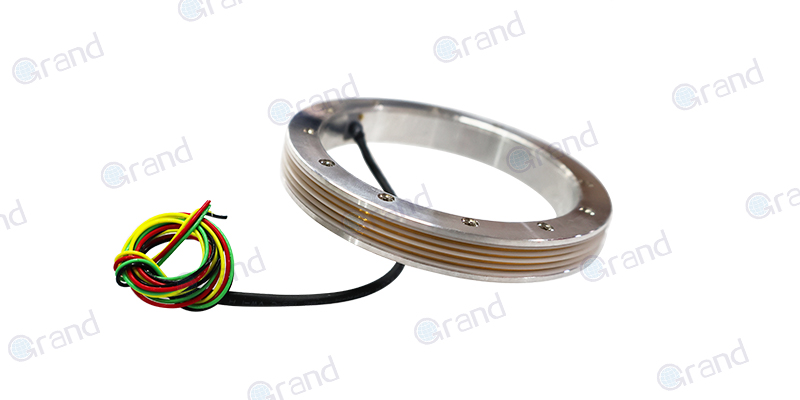
Choosing the optimal Separate Slip Ring requires consideration of several factors including your specific application requirements, the operating environment, and performance expectations. This guide will help you find the best Separate Slip Ring for your use:
1. Understand Your Application Requirements
Start by clearly defining what you need the Separate Slip Ring to do. This includes understanding the types of signals it must transmit, the number of circuits, operating speed, working temperature, and any other specific requirements. For instance, some applications may require the transmission of power and data concurrently, while others might demand compatibility with high-speed data networks.
2. Consider Size and Space Requirements
The physical size of the Separate Slip Ring and the available space should be considered in your selection. Your choice should fit into the system while still providing the necessary performance characteristics. If your application has strict dimensional constraints or unusual configurations, you might need to opt for a customized solution.
3. Determine Environmental Conditions
Consider the working environment where the Separate Slip Ring will be installed. Factors such as temperature, humidity, dust, and vibrations play a role in determining suitability. Some Slip Rings are designed specifically for aggressive environmental conditions while others may require additional protective measures.
4. Review the Load Capacity
The load capacity of the Separate Slip Ring, i.e., the maximum power and current it can handle, is crucial for safety and reliability purposes. Make sure it meets or exceeds your application’s maximum load requirements to prevent overheating or potential damage.
5. Check the Contact Material
Ensure that the contact material used in the Slip Ring suits your application and provides a good balance between lifespan, power rating, and cost. Some common materials include gold, silver, copper, and graphite, each with its trade-offs in terms of performance, longevity, and price.
6. Examine Durability and Maintenance Requirements
Opt for a Separate Slip Ring that offers a long operational life with minimal maintenance. Examine both the durability of the Slip Ring components and the expected frequency of maintenance services. It’s also worth considering the ease of maintenance, as some designs are more serviceable than others.
7. Evaluate Costs
Consider the cost-effectiveness of the Separate Slip Ring solution. While cheaper options may be attractive initially, keep in mind that the total cost of ownership includes maintenance costs and the potential cost of downtime due to failures or replacements.
8. Partner with a Reliable Supplier
Finally, choose a trusted and reliable supplier who can provide expert advice, quality products, after-sales service, and support. They should have a good reputation in the market and preferably offer customization options, should your requirements change in the future.
In summary, to find the optimal Separate Slip Ring, it’s vital to understand your application requirements well and to converge those requirements with output capacity, physical dimensions, environmental conditions, material, durability, and cost, all while ensuring you’re working with a reliable supplier.
Conclusion
In conclusion, the Separate Slip Ring, with its unique ability to smoothly transmit power and signals amidst rotating structures, is an invaluable asset across many industries. The pivotal role it plays in many applications ranging from wind turbines to radar antennae means that choosing the best Separate Slip Ring significantly impacts system performance. It’s important to understand the technical data and functionality associated with Separate Slip Rings. Undeniably, Separate Slip Rings have their advantages, such as high speed and flexibility, but one cannot overlook the complexities in installation and the high cost involved.
FAQ about Separate Slip Ring
Q1: What are some key factors to consider when choosing a Separate Slip Ring?
A: Some key aspects include required current and voltage, revolutions per minute, operational environment, and cost.
Q2: How do you maintain a Separate Slip Ring for improved longevity?
A: Regular maintenance involves inspection for wear and tear, proper cleaning, and ensuring appropriate lubrication.
Q3: Are there disadvantages to using Separate Slip Rings?
A: Yes, there are a few downsides such as complexities during installation and higher costs compared to traditional types.
See What We Can Do

